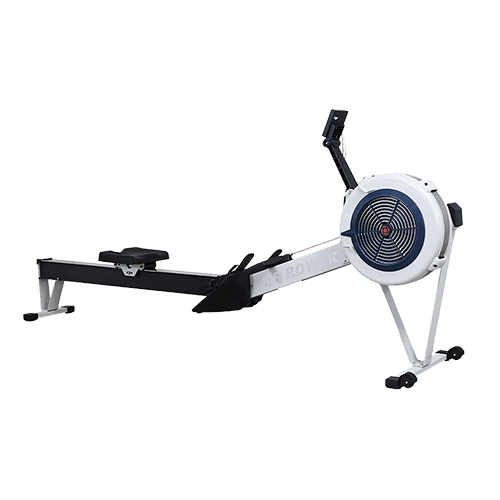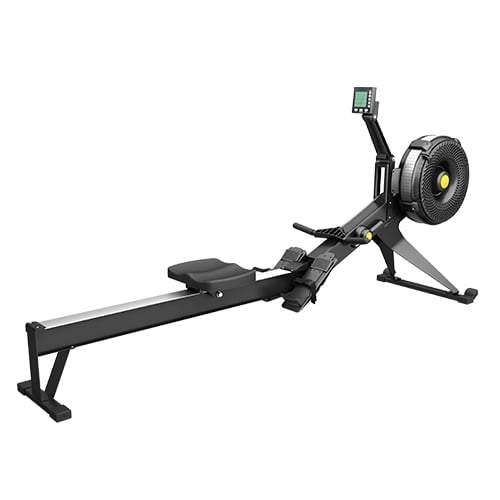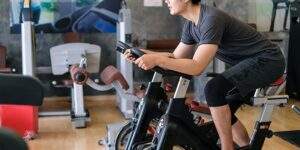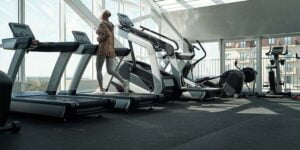Introduction

Row exercise machines are versatile fitness tools that offer numerous benefits beyond their primary function of cardiovascular and strength training. Whether you’re a seasoned gym-goer or new to fitness equipment, understanding the diverse advantages of rowing machines can significantly enhance your workout routine. In this comprehensive guide, we delve into the lesser-known benefits supported by scientific research and expert insights.
Benefits of Row Exercise Machines
Full-Body Workout
Rowing machines engage multiple muscle groups simultaneously, providing a comprehensive workout that targets the legs, back, arms, and core. This holistic approach not only promotes balanced muscle development but also improves overall fitness and endurance. According to a study published in the Journal of Strength and Conditioning Research, rowing activates up to 86% of the body’s musculature during each stroke, making it one of the most effective total-body exercises available.
Cardiovascular Health
Regular use of rowing machines improves cardiovascular fitness by elevating heart rate and increasing oxygen consumption. The rhythmic nature of rowing helps strengthen the heart muscle and improve its efficiency, which is crucial for reducing the risk of cardiovascular diseases. Research conducted by the American College of Sports Medicine suggests that rowing can enhance aerobic capacity and lower blood pressure, contributing to better overall heart health.
Low-Impact Exercise
Unlike high-impact activities such as running or jumping, rowing is gentle on the joints while still providing a challenging workout. The smooth, fluid motion of rowing minimizes stress on the knees, hips, and ankles, making it an ideal choice for individuals recovering from injuries or suffering from joint pain. This low-impact nature also extends the longevity of rowing as a sustainable exercise option for people of all ages and fitness levels.
Calorie Burning
Rowing machines are highly effective calorie burners, making them a valuable tool for weight management and fat loss. A vigorous 30-minute rowing session can burn between 200 to 300 calories, depending on intensity and individual factors such as weight and fitness level. Incorporating rowing into a balanced exercise regimen can help create a calorie deficit necessary for achieving weight loss goals.
Improved Posture
Proper rowing technique requires maintaining a straight back and engaging the core muscles throughout the exercise. Over time, this strengthens the muscles responsible for maintaining good posture and spinal alignment. Improved posture not only enhances physical appearance but also reduces the risk of back pain and injuries associated with poor spinal alignment.
Mental Well-being
Rowing promotes mental well-being by stimulating the release of endorphins, which are neurotransmitters known for their mood-boosting effects. Regular exercise on a rowing machine can alleviate stress, anxiety, and symptoms of depression by providing a focused, meditative workout experience. The rhythmic motion and repetitive nature of rowing can also enhance concentration and mental clarity.
Versatility
Rowing machines offer versatility in workout options, allowing users to customize their exercise routines according to their fitness goals and preferences. Whether you prefer steady-state endurance training, interval workouts, or circuit training, rowing machines accommodate various fitness levels and objectives. This versatility makes rowing an adaptable and engaging form of exercise that can be integrated into diverse fitness programs.
Scientific Evidence Supporting Rowing Benefits
Scientific studies consistently validate the benefits of rowing for physical fitness and overall health. Research published in the European Journal of Applied Physiology and Medicine & Science in Sports & Exercise has demonstrated the positive effects of rowing on muscle strength, cardiovascular endurance, and metabolic health. These studies underscore the efficacy of rowing machines in promoting optimal fitness outcomes.
Case Studies and User Testimonials

Real-life testimonials and case studies further illustrate the transformative impact of rowing on individuals’ fitness journeys. From personal anecdotes of weight loss and muscle gain to accounts of improved athletic performance and overall well-being, these stories highlight the diverse benefits and tangible results achievable through regular rowing exercises.
Conclusion
Row exercise machines offer a multifaceted approach to physical fitness, encompassing cardiovascular health, muscular strength, posture improvement, and mental well-being. Whether you’re aiming to achieve weight loss goals, enhance athletic performance, or simply maintain overall health, incorporating rowing into your exercise regimen can yield significant benefits. Its versatility, low-impact nature, and efficiency in burning calories make it a valuable asset in any fitness enthusiast’s toolkit. Embrace the power of rowing machines and discover firsthand the transformative effects they can have on your fitness journey.
FAQ
Q:What muscles does a rowing machine work?
A:Rowing primarily targets the quadriceps, hamstrings, glutes, back muscles (latissimus dorsi), and biceps. It also engages the core and shoulders, providing a comprehensive total-body workout.
Q:Can rowing help with weight loss?
A:Yes, rowing is an effective calorie-burning exercise that can contribute to weight loss when combined with a balanced diet and consistent workout routine. The intensity and duration of rowing sessions play a significant role in calorie expenditure and fat loss.
Q:Is rowing suitable for people with joint problems?
A:Yes, rowing is a low-impact exercise that minimizes stress on the joints while still providing a challenging cardiovascular and strength-training workout. It is often recommended for individuals with joint issues or those recovering from injuries, as it promotes joint mobility and muscle strength without exacerbating existing conditions.
Q:How often should I use a rowing machine?
A:Beginners can start with 20-30 minutes of rowing, 3 times per week, gradually increasing duration and intensity as fitness levels improve. Listening to your body and allowing for adequate rest and recovery between sessions is essential.



